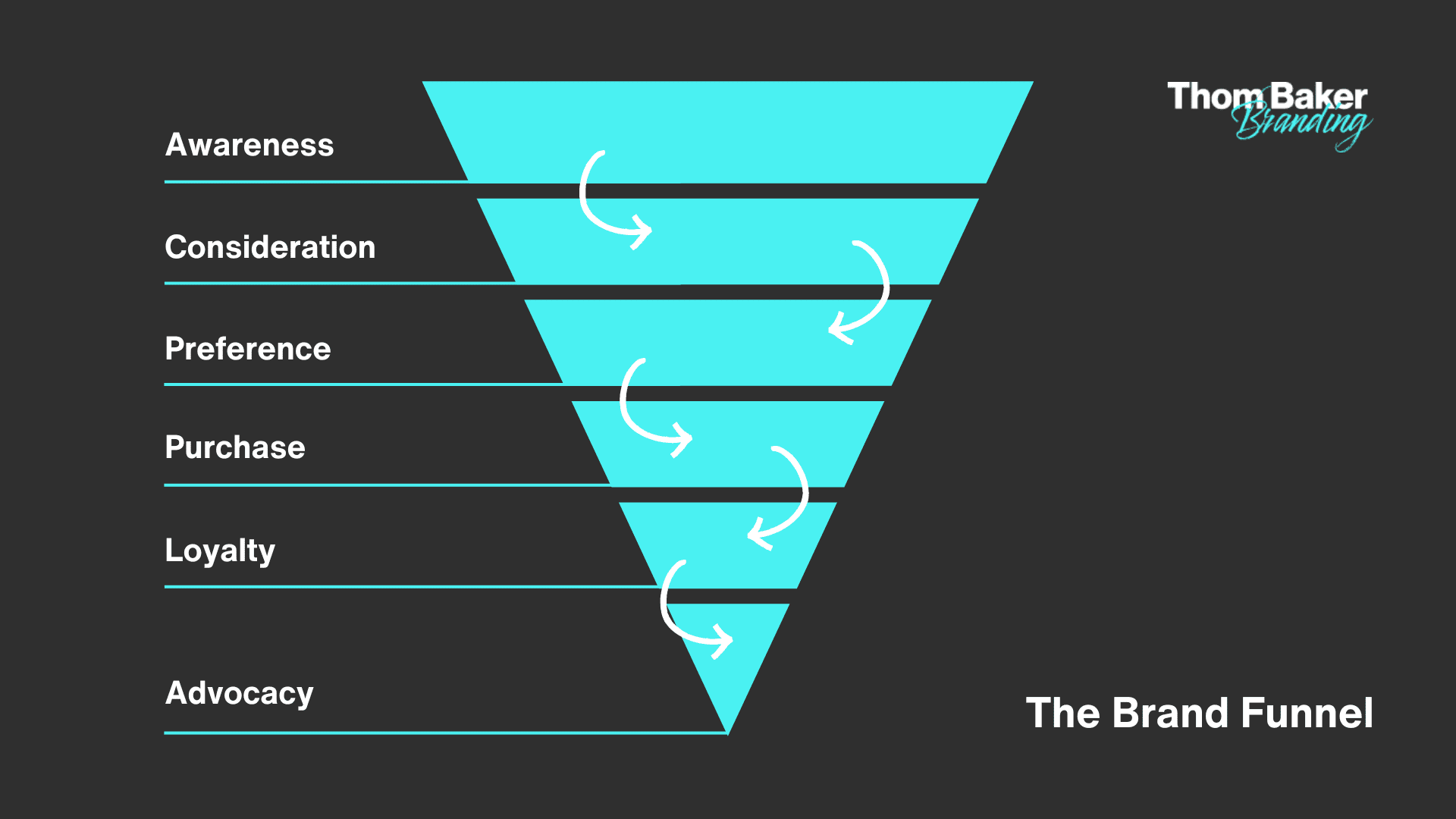Today we’re focusing on measuring your brand’s equity and ROI.
Building a brand isn’t just a side task. It is vital for a company’s success. How do we know it’s working? By measuring!
The combination of equity and Return on Investment (ROI) provides a clear picture of a brand’s value and financial impact, which is crucial for attracting investors.
In this article, I’ll break down how to measure equity and ROI, with a special emphasis on the benefits of a value-centric brand strategy. Understanding these metrics is essential not only for making informed business decisions but also for fostering long-term growth and sustainability.
Assessing your brand’s performance helps you find areas for improvement, stay relevant, and competitive. A good brand strategy boosts profits, enhances customer loyalty, and strengthens your market position.
Understanding Brand Equity: A Holistic Approach
At its core, this encapsulates the intangible value premium that a brand contributes to a product or service beyond its functional attributes. It is a culmination of consumer perceptions, emotions, and the unique associations they forge with a particular brand.
Think of it as the difference between Coca-Cola and generic Rola-Cola from the local shop. You’re paying a premium based on intangible value.
This premium often stems from years of strategic marketing, consistent messaging, and the ability to build trust and loyalty among consumers. When a brand like Coca-Cola invests in advertising, sponsorships, or community initiatives, it is embedding itself into the cultural fabric, creating a deeper emotional connection.
This connection can be so powerful that it influences purchasing decisions, making consumers willing to pay more for a product they perceive as having greater value, even if the functional difference is minimal or non-existent.
Components of Brand Equity
- Brand Awareness: The degree to which consumers recognize and recall a brand.
- Brand Loyalty: The extent of customer commitment and repeat purchase behaviour.
- Perceived Quality: Consumer assessments of the brand’s quality.
- Brand Associations: The mental connections consumers make with the brand.
Quantifying Brand Equity: Metrics and Measurements
Quantitative Metrics
There are a myriad of ways we can look at measuring a brand, below are a few. Essentially, whether we’re talking about a brand ladder or a brand funnel, we’re looking at quantifying the number of customers who are engaged and receptive to the brand. More people higher up the ladder, or further down the funnel mean stronger, healthier brands that hold more equity than their rivals.
To delve deeper, one might employ metrics such as brand awareness, which examines how familiar consumers are with the brand, and brand loyalty, which gauges the degree of consumer allegiance.
Additionally, brand sentiment analysis can provide insight into public perception, while customer satisfaction scores can highlight strengths and areas for improvement. By understanding these various dimensions, businesses can refine their strategies to foster a more robust and enduring brand presence.
- Brand Awareness Metrics:
- Reach: The percentage of the target audience exposed to the brand.
- Recall: The ability of consumers to remember the brand.
- Brand Loyalty Metrics:
- Repeat Purchase Rate: The frequency at which customers make repeat purchases.
- Customer Retention Rate: The percentage of customers retained over a specific period.
- Perceived Quality Metrics:
- Customer Satisfaction Scores (CSAT): A measure of overall satisfaction.
- Net Promoter Score (NPS): Measures the likelihood of customers recommending the brand.
- Brand Association Metrics:
- Brand Image Surveys: Evaluate how consumers perceive the brand’s personality.
- Share of Voice (SOV): The brand’s presence compared to competitors in the market.


Qualitative Approaches
Qualitative we are looking more into the perceptions of your company. By harnessing the positive – we are looking at creating feedback loops that strengthen those positive perceptions. This involves gathering detailed and insightful feedback from customers and stakeholders, identifying key areas of satisfaction, and amplifying those aspects in our communication and branding strategies.
Our goal is to build a robust and positive image that resonates well with your target audience, fostering a stronger and more enduring relationship with them. By continuously monitoring and adapting our approach based on this qualitative data, we aim to create a dynamic improvement cycle that not only enhances your company’s reputation but also drives long-term loyalty and engagement.
- Focus Groups:
- In-depth discussions with a small group to understand nuanced perceptions and emotions.
- Uncover qualitative insights that quantitative data might overlook.
- Social Listening:
- Monitoring social media for brand mentions, sentiment analysis, and emerging trends.
- Provides a real-time pulse of consumer perceptions.
- Brand Audits:
- A comprehensive analysis of all brand touchpoints.
- Ensures consistency in messaging, visual elements, and customer experience.
ROI in Brand Building: The Marriage of Tangible and Intangible Returns
Calculating ROI (Return on Investment) in branding looks beyond immediate sales to the long-term financial impact of building a brand. ROI measures the return on resources spent on strengthening a brand. Branding is a long term investment requiring consistent effort. While marketing strategies change, a brand’s core should stay mostly the same over time.
To measure the ROI of branding, consider factors like brand awareness, customer loyalty, and market share. These elements add value to a brand and can boost future revenue.
A strong brand also builds customer trust and preference, easing the launch of new products or market entries. Thus, the financial benefits of branding are varied, sometimes intangible, but essential for ongoing business growth. Effective branding enhances customer experience with a clear message, emotional connection, and community around shared values.
This can lead to higher customer retention rates. Over time, a strong brand can charge premium prices, improving profit margins. Investing in activities like creating quality content, social responsibility, and excellent customer service can increase a brand’s value. Ultimately, branding ROI shows not just in financial results but also in brand equity, setting the business up for long-term success.
Tangible and Intangible ROI
- Tangible ROI:
- Sales Growth: Direct impact on revenue and market share.
- Market Expansion: Increased brand value can pave the way for entry into new markets.
- Intangible ROI:
- Brand Loyalty: Higher customer retention and reduced marketing costs.
- Market Differentiation: Enhanced brand perception sets the brand apart from competitors.
Key Performance Indicators (KPIs) for Brand ROI
- Revenue Growth:
- Measuring sales growth attributed to brand-building activities.
- Customer Lifetime Value (CLV):
- Assessing the long-term value of a customer, factoring in loyalty.
- Social Media Engagement:
- Tracking likes, shares, and comments as indicators of brand engagement.
- Conversion Rates:
- Monitoring the percentage of leads converted into customers.
The Strategic Role of Brand Value in Shaping Business Outcomes
Building a Strong Foundation
Whether you’re a start-up or an established business, a good brand strategy is going to seat you firmly in a position to both give your customers the most value, and also to get the most value for your business. By carefully crafting your brand’s identity, you can create a lasting impression that differentiates you from competitors and fosters customer loyalty.
Moreover, a well-defined brand strategy helps streamline marketing efforts, making it easier to target the right audience and communicate your value proposition effectively. Ultimately, investing time and resources into developing a strong brand strategy will pay off by driving growth, boosting profitability, and ensuring long-term success in the ever-evolving marketplace.
- Brand Positioning:
- Clearly defining the brand’s unique position in the market.
- Aligning brand values with customer expectations.
- Consistent Branding:
- Ensuring uniformity in messaging, visual identity, and customer experience.
- Building a cohesive brand image across all touchpoints.
Emotional Connection with Consumers
Branding is all about connections – people don’t buy with their rational brains, they buy with their emotions. This emotional connection leads to brand loyalty, creating a bond that goes beyond the product or service itself. By understanding and tapping into these emotional triggers, companies can foster a sense of trust and reliability with their customers. Effective branding engages the senses and evokes memories, making consumers feel a part of a larger community and experience.
- Storytelling:
- Crafting narratives that resonate with the target audience.
- Creating an emotional bond that transcends product features.
- Brand Personality:
- Defining the brand as a person with distinct traits.
- Evoking emotions and building relatability.
Adaptability and Innovation
Sorry – more sailing analogies. A brand strategy gives your business a heading – a true north – everything you do hinges on that long-term focused direction.
But the world is not static. Winds change, markets grow and shrink. So while that heading may stay the same, there is a constant need to adjust and innovate.
This means regularly reassessing your market position, revising your tactics, and staying open to new opportunities as they arise. Just as a seasoned sailor knows when to trim the sails or change course slightly, a savvy business leader knows that flexibility and responsiveness are key to staying on track and reaching long-term goals. Without this dynamic approach, even the best-laid plans can founder in the face of unpredictable challenges.
- Staying Relevant:
- Regularly assessing market trends and shifts in consumer preferences.
- Adapting brand strategies to stay current.
- Innovation:
- Introducing new products or services that align with brand values.
- Demonstrating a commitment to progress.
The Transformative Impact of Value-Centric Brand Strategies
Customer Perception
- Positive Associations:
- Consumers associate the brand with positive attributes.
- Higher perceived value leads to increased equity.
- Trust and Credibility:
- Value-centric brands build trust with customers.
- Credibility positively influences purchase decisions.
Competitive Advantage
- Market Differentiation:
- Value-centric brands stand out in a crowded market.
- Unique value propositions create a competitive edge.
- Price Premium:
- Consumers are willing to pay more for brands with perceived higher value.
- Mitigates price sensitivity.
Employee Engagement and Advocacy
Nearly all of the above can be applied internally, as well as externally. Employees should be your number one customer! I encourage these measurements and surveys to be done internally as well as with your customers, your company should live the brand after all! Fostering a culture where employees feel valued and listened to, you create an environment that mirrors what you aim to offer your customers.
This alignment not only boosts employee morale but also enhances overall performance, making your brand truly authentic and consistent. Investing in internal infrastructure and employee well-being pays dividends in customer satisfaction, as happy employees naturally translate to happy customers. The ripple effect of this approach can lead to higher retention rates, superior customer service, and ultimately, a more resilient brand.
- Internal Branding:
- Aligning employees with the brand’s values and mission.
- Fostering a sense of pride and commitment.
- Brand Advocacy:
- Engaged employees become brand advocates.
- Word-of-mouth promotion amplifies brand reach.
The Symphony of Brand Equity, ROI, and Strategic Value
Brand equity and ROI use metrics to check your brand’s health. A value-driven brand strategy offers purpose and returns, boosting your organization’s success. Focusing on long-term growth and customer loyalty keeps your brand relevant in a competitive market.
Managing brand equity well increases customer satisfaction, advocacy, and market share. Investing in brand development helps companies adapt to changing consumer preferences, maintaining profitability and resilience.
Using data analytics and innovative technologies in digital marketing creates personalized customer experiences and builds trust.
Sustainable practices and social responsibility align company values with customer values, enhancing brand integrity and appeal.
Combining traditional and modern marketing tactics ensures long-term success and industry leadership.






